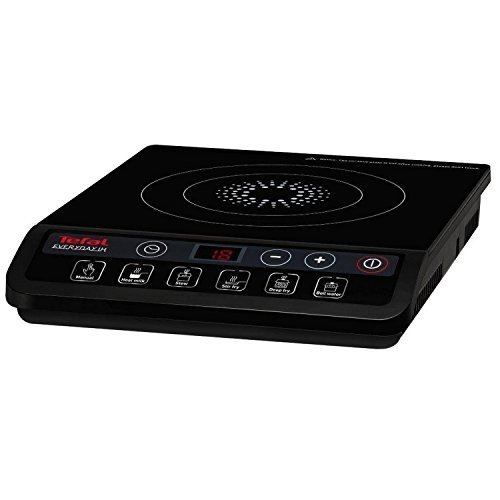
In modern kitchens, the design and functionality of appliances play a significant role in how space is utilized and how culinary tasks are performed. Among the essential devices that enhance kitchen aesthetics and efficiency are built-in stoves and ovens. This article delves into the features, advantages, and considerations of integrating built-in stoves and ovens into your cooking space.
What Are Built-In Stoves and Ovens?
Built-in stoves and ovens are permanently installed kitchen appliances designed to fit seamlessly into cabinetry. Unlike freestanding options, they offer a more integrated look, contributing to a sleek and streamlined kitchen design. These appliances come in various configurations, including wall ovens, ranges (which combine both an oven and stovetop), and cooktops.
Advantages of Built-In Stoves and Ovens
Space Efficiency: Built-in appliances are designed to maximize kitchen space. They can be positioned at various heights, which makes them ideal for smaller kitchens or open-concept spaces.
Aesthetic Appeal: With their sleek designs, built-in stoves and ovens provide a modern and sophisticated look. They can be customized with cabinetry, creating a cohesive design.
Enhanced Functionality: Many built-in models come with advanced features such as convection cooking, self-cleaning functions, and smart technology options, allowing for a more versatile cooking experience.
Improved Organization: Built-in options can help to maintain a clean and organized appearance, eliminating the need for countertop space for appliances that can clutter the kitchen.
Ergonomics: Built-in stoves and ovens can be installed at eye level or at a height that is comfortable for the user, making cooking easier and reducing strain related to bending over.
Types of Built-In Stoves and Ovens
There are several types of built-in stoves and ovens to choose from, each with its features and benefits:
Built-In Ovens
- Single Oven: A traditional option, perfect for everyday baking and roasting.
- Double Oven: Provides more cooking capacity with two oven compartments, allowing for multi-dish cooking at different temperatures.
- Wall Oven: Installed within the wall, often at eye level, allowing for easy access.
Cooktops
- Gas Cooktop: Offers precise temperature control and is favored by professional chefs for its immediate heat adjustments.
- Electric Cooktop: Consistent and stable heat, typically available in smooth or coil designs.
- Induction Cooktop: Crafts a magnetic field to heat cookware directly, providing efficient and quick cooking.
Considerations When Buying Built-In Stoves and Ovens
Before investing in built-in appliances, there are several factors to consider:
Kitchen Layout: Analyze the kitchen space to ensure the selected models fit well. Take into account the installation area, plumbing, and electrical connections.
Budget: Built-in appliances can be more expensive than their freestanding counterparts. Factor in installation costs and necessary alterations to cabinetry.
Fuel Type: Determine whether gas, electric, or induction is suitable for your cooking preferences and available utilities.
Features: Look for specific features that meet your cooking style, such as self-cleaning options, smart connectivity, or additional cooking modes.
Brand Reputation: Consider well-reviewed brands that are known for reliability and customer service.
Comparison Table: Built-In Stoves and Ovens
Here’s a comparison table summarizing different built-in stove and oven options:
| Type | Features | Pros | Cons |
|---|---|---|---|
| Single Oven | One cooking cavity, typically standard size | Compact, efficient | Limited cooking space |
| Double Oven | Two cooking cavities for simultaneous cooking | More versatile, saves time | Requires more space |
| Wall Oven | Eye-level placement, often sleek designs | Ergonomic, stylish | Higher installation cost |
| Gas Cooktop | Flame-based cooking, precise temperature control | Immediate heat, easy adjustments | Requires gas line |
| Electric Cooktop | Consistent heat, available in various styles | Easy to clean, stable heating | Slower heat adjustments |
| Induction Cooktop | Efficient, heats cookware directly | Quick heating, safe | May require compatible cookware |
Maintenance Tips for Built-In Stoves and Ovens
To ensure longevity and performance, regular maintenance is key. Here are some tips:
- Keep surfaces clean: Wipe down spills immediately to prevent buildup.
- Follow manufacturer guidelines: Refer to the user manual for specific cleaning techniques and maintenance schedules.
- Check seals and gaskets: Ensure oven doors close properly to maintain heating efficiency.
- Inspect connections: Regularly check gas lines (if applicable) and electrical connections for safety.
FAQs
1. Can I replace my existing appliances with built-in models?
Yes, as long as the new appliances fit the existing space. Custom cabinetry may be needed for a perfect fit.
2. Do built-in stoves and ovens require professional installation?
It is recommended to hire professionals for proper installation, especially for gas lines and electrical connections.
3. Are built-in appliances more energy-efficient?
Many Built In Range Cooker-in models are designed to be more energy-efficient than traditional units, but it's essential to check energy ratings.
4. What is the average lifespan of built-in stoves and ovens?
With proper care, built-in appliances can last between 10 to 20 years.
5. Can I integrate smart technology into built-in stoves and ovens?
Many modern built-in appliances come with smart features, allowing remote control, scheduling, and monitoring through mobile apps.
Investing in built-in stoves and ovens can significantly enhance the functionality and appearance of any kitchen. The many advantages, including space efficiency and modern aesthetics, make them a worthwhile consideration for anyone looking to upgrade their cooking space. By choosing the right type and maintaining your appliances properly, you can enjoy a sophisticated kitchen equipped for culinary excellence for years to come.









